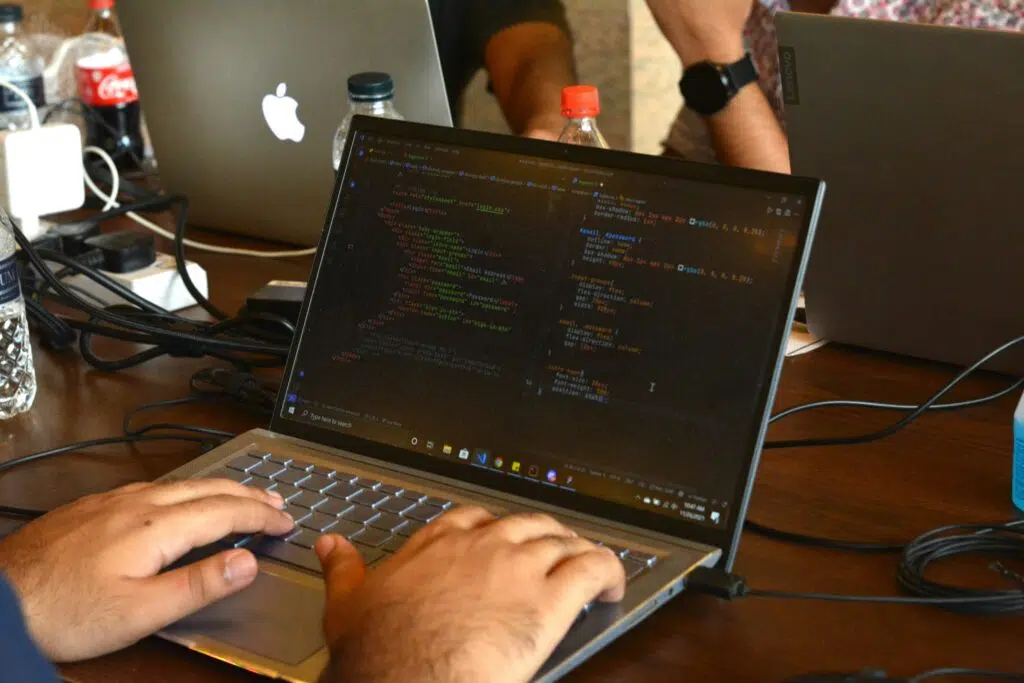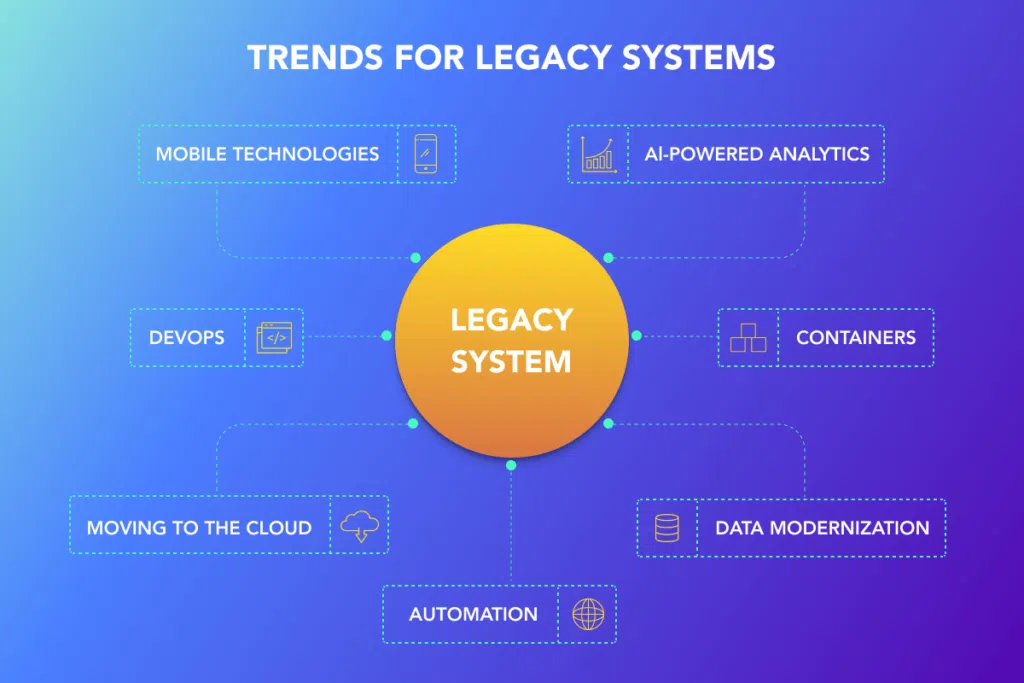Legacy System Modernization Unlock: Transitioning to Agile, Future-Ready Software Solutions
In today’s fast-paced digital landscape, businesses are increasingly recognizing the need for legacy system modernization. Outdated systems can hinder growth, impede innovation, and reduce operational efficiency. Up to 70% of organizations recognize that their legacy systems impede their ability to innovate and compete in today’s digital economy. As a leading software development company, we understand the critical importance of transitioning to agile, future-ready software solutions. This article delves into the technical deep dives and industry trends shaping this transformative journey of legacy system modernization.

Understanding legacy system modernization effectiveness
The Importance of Legacy System Modernization
Legacy systems, while reliable, often fail to keep pace with modern business requirements. They are typically built on outdated technologies, making them difficult to integrate with newer systems and costly to maintain. Legacy application migration addresses these challenges by upgrading existing systems to more agile and scalable architectures, which can help alleviate ongoing software maintenance issues.
Benefits of Modernizing Legacy Systems
-
Enhanced Agility: Modernized systems provide businesses with the ability to swiftly adapt to market changes and evolving customer demands. For instance, a retail company that modernizes its inventory management system through legacy system modernization can quickly adjust stock levels and pricing in response to real-time market data, ensuring they remain competitive and responsive to customer needs.
-
Improved Efficiency: Automation and streamlined processes significantly reduce operational costs and enhance productivity. A study by Harvard Business Review suggests that automation can improve productivity of up to 90% workers in specific areas. An example of this is a manufacturing firm that replaces its outdated manual tracking system with an automated ERP system, representing a key aspect of legacy system modernization. This shift can lead to faster production cycles, reduced errors, and lower labor costs.
-
Scalability: Future-ready solutions are designed to scale effortlessly as the business grows. For instance, a financial services company that moves from a legacy system to a cloud-based infrastructure can easily scale its operations to handle increasing transaction volumes during peak periods without compromising performance. Organizations that migrate to the cloud can reduce IT costs by 30% to 50%. This shift is central to the process of legacy system modernization.
-
Better Integration: Modern systems are built to integrate seamlessly with other applications and technologies, promoting innovation. For example, a healthcare provider that modernizes its patient record system can integrate it with advanced analytics tools and telehealth services, a goal often achieved through legacy system modernization. Research shows that companies using integrated digital strategies can achieve 25% higher performance than those that don’t (source: Forbes). This integration enhances patient care through better data insights and remote consultation capabilities.
Industry Trends in Legacy System Modernization
Adopting agile methodologies is a key component of legacy system modernization. Agile development promotes flexibility, iterative progress, and collaboration, making it ideal for transforming legacy systems.

Legacy system modernization trend (source: Softengi)
Adopting Agile Methodologies
Adopting agile development methodologies is a cornerstone of legacy system modernization. Agile development promotes flexibility, iterative progress, and collaboration, making it ideal for transforming legacy systems. Teams can break down the modernization process into manageable sprints, ensuring continuous feedback and improvement. This approach not only accelerates the development cycle but also helps in adapting to changing business needs and technological advancements.
Cloud Migration
Migrating legacy systems to the cloud is a pivotal trend in legacy system modernization efforts. Cloud platforms such as Amazon Web Services (AWS), Microsoft Azure, and Google Cloud offer unparalleled scalability, flexibility, and cost-efficiency. A report from Flexera found that 94% of respondents reported using cloud services for at least some of their workloads. These platforms enable organizations to leverage advanced technologies like artificial intelligence (AI) and the Internet of Things (IoT), significantly enhancing system capabilities. Additionally, cloud migration reduces the burden of maintaining physical infrastructure, making it a key component of legacy system modernization.
Microservices Architecture
Transitioning from monolithic applications to microservices architecture is another critical trend in legacy system modernization. Microservices break down applications into smaller, independent services, each responsible for a specific functionality. According to a report by NGINX, 62% of organizations are implementing microservices to enhance their development processes. This modular approach enables easier management, scalability, and faster deployment of new features. Each microservice can be developed, tested, and deployed independently, reducing the risk of system-wide failures and facilitating continuous integration and continuous delivery (CI/CD).
DevOps Integration
Integrating DevOps practices into the modernization process is essential for achieving continuous delivery and integration. DevOps fosters a culture of collaboration between development and operations teams, streamlining workflows and reducing bottlenecks. A study by Puppet shows that organizations implementing DevOps practices report a 206 times more frequent code deployment (source: Puppet). By automating repetitive tasks as part of legacy system modernization and implementing CI/CD pipelines, organizations can accelerate development cycles, improve system reliability, and enhance overall performance.
Low-Code and No-Code Platforms
The adoption of low-code and no-code platforms is transforming how legacy systems are modernized. According to a report by Forrester, low-code development is expected to grow to a $21 billion industry by 2022. These platforms enable faster development by allowing users to create applications with minimal or no coding required. They are particularly useful for modernizing legacy systems as they reduce the time and effort needed to build and deploy new functionalities around budget constraints.
Steps to Transition to Agile Software Solutions
Step 1: Assessment and Planning
-
Evaluate Current Systems: Begin by thoroughly assessing the current systems to understand their limitations, strengths, and areas that need improvement. This involves reviewing system architecture, performance metrics, and user feedback.
-
Define Objectives: Clearly outline the goals for the modernization project. Ensure these goals are specific, measurable, achievable, relevant, and time-bound (SMART).
-
Develop a Roadmap: Create a detailed roadmap that outlines the steps needed to transition from legacy systems to modern, agile solutions, which may involve legacy system modernization and adherence to industry regulations.
Step 2: Agile Implementation
-
Form Cross-Functional Teams: Assemble teams with diverse skill sets. Cross-functional teams ensure that all aspects of the project, from technical implementation to business requirements, are addressed.
-
Adopt Iterative Development: Implement iterative development processes like Scrum or Kanban, allowing for continuous refinement and improvement of the system. This enhances the ability to manage software development contracts effectively.
-
Regular Feedback: Establish mechanisms for regular feedback from stakeholders. This feedback should be incorporated into each development cycle to ensure that the solution aligns with business needs.
Step 3: Integration and Testing
-
API Integration: Ensure that the new system can seamlessly communicate with other applications and services.
-
Automated Testing: Implement automated testing frameworks to maintain system quality, which is particularly beneficial for projects focused on legacy system modernization.
Step 4: Deployment and Monitoring
-
Phased Deployment: Plan a phased deployment approach to minimize disruption.
-
Continuous Monitoring: Use advanced monitoring tools to continuously track system performance and address issues promptly.
Case Studies
Case Study 1: Amazon’s Mainframe Migration
Amazon successfully migrated its mainframe workloads to a modern cloud-based architecture. By doing so, they achieved significant cost savings, improved agility, and enhanced system performance. The migration involved re-architecting applications to leverage cloud-native services, demonstrating the power of legacy system modernization.
Case Study 2: General Electric’s Digital Transformation
General Electric (GE) undertook a massive digital transformation to modernize its legacy systems. By adopting agile methodologies and migrating to the cloud, GE enhanced its operational efficiency and reduced maintenance costs. The transition also enabled GE to innovate faster and deliver new services to its customers.
Case Study 3: Savvycom’s Successful Modernization Project
At Savvycom, we helped a leading financial services provider modernize their legacy systems. By implementing a microservices architecture and migrating to the cloud, we enhanced their system’s scalability and performance. Our agile approach ensured continuous delivery of high-quality solutions, resulting in improved customer satisfaction and reduced operational costs.
Frequently Asked Questions
How does agile methodology benefit legacy system modernization?
Agile methodology brings significant benefits to legacy system modernization by promoting flexibility, collaboration, and iterative progress. By breaking down the modernization process into smaller, manageable parts, agile allows teams to focus on incremental improvements rather than attempting a complete overhaul at once. This approach facilitates continuous feedback and adaptation, enabling the team to quickly address any issues or changes in requirements. For example, a software development company might use agile sprints to progressively refactor legacy code, ensuring each iteration enhances functionality and stability.
What challenges can arise during the modernization process?
Modernizing legacy systems can present several challenges. Resistance to change is a common issue, as employees may be accustomed to the existing system and wary of new technologies. Data migration is another significant challenge, involving the transfer of large volumes of data from old systems to new ones without loss or corruption. Integration difficulties can also arise, particularly when new systems need to work seamlessly with remaining legacy components. Addressing these challenges requires meticulous planning, securing stakeholder buy-in, and employing robust integration tools and strategies.
How do microservices enhance legacy system modernization?
Microservices architecture offers a powerful approach to legacy system modernization by decomposing monolithic applications into smaller, independent services. This modularity enhances scalability, as each microservice can be developed, deployed, and scaled independently. It simplifies maintenance, allowing teams to update or replace individual services without affecting the entire system. Moreover, microservices facilitate faster deployment of new features and make integration with modern technologies easier. For instance, a banking software development company might transition to a microservices architecture to improve transaction processing speed and integrate with modern payment gateways.
Why is cloud migration important for modernizing legacy systems?
Cloud migration is a critical aspect of modernizing legacy systems due to its numerous benefits, including scalability, flexibility, and cost-efficiency. Moving to the cloud allows organizations to leverage advanced technologies such as artificial intelligence (AI) and the Internet of Things (IoT), enhancing system capabilities and performance. Cloud platforms offer on-demand resources, reducing the need for maintaining expensive physical infrastructure. For example, a retail company modernizing its legacy inventory system might migrate to a cloud-based solution to gain real-time analytics and improve supply chain management.
For more details of legacy system modernization, please watch the video below:
Conclusion
For organizations looking to modernize their legacy systems, partnering with a trusted software development company can make a significant difference. As a top 10 IT provider in Vietnam, Savvycom delivers solutions that are valued for money and tailored to meet your unique needs. If you have needs related to legacy system modernization or the content discussed in this blog, feel free to contact us.
In summary, the journey of legacy system modernization is critical for businesses aiming to thrive in a digital-first world, and aligning with best practices is essential for successful transformation.
Tech Consulting, End-to-End Product Development, Cloud & DevOps Service! Since 2009, Savvycom has been harnessing digital technologies for the benefit of businesses, mid and large enterprises, and startups across the variety of industries. We can help you to build high-quality software solutions and products as well as deliver a wide range of related professional software development services.
Savvycom is right where you need. Contact us now for further consultation:
- Phone: +84 24 3202 9222
- Hotline: +1 408 663 8600 (US); +612 8006 1349 (AUS); +84 32 675 2886 (VN)
- Email: [email protected]



